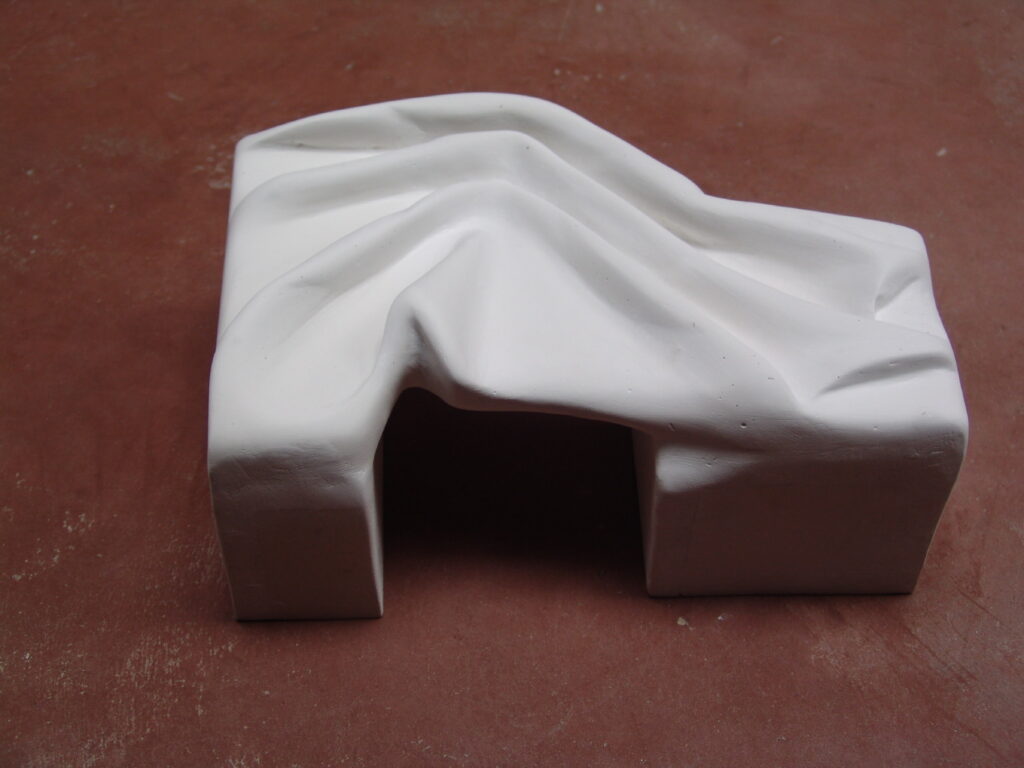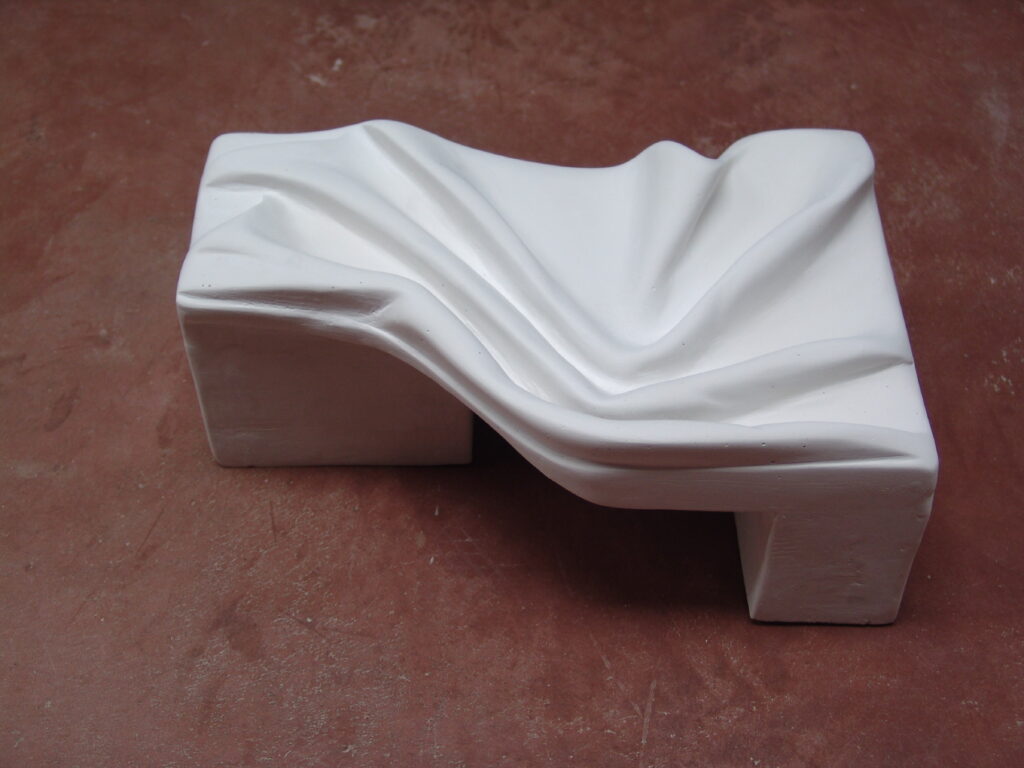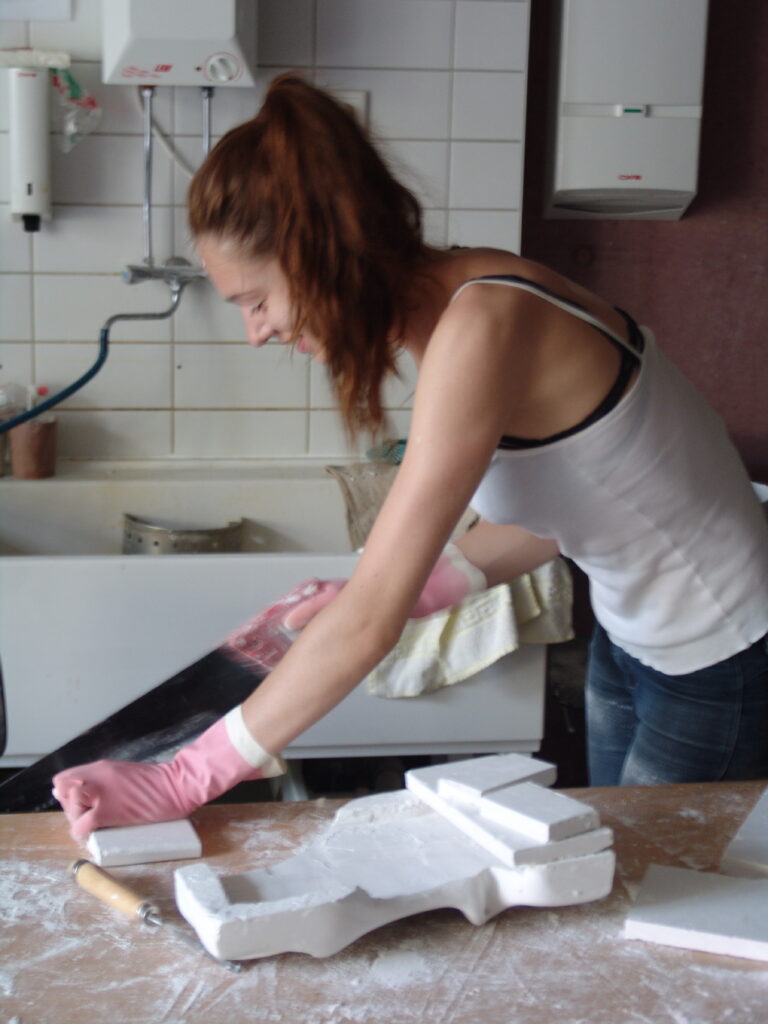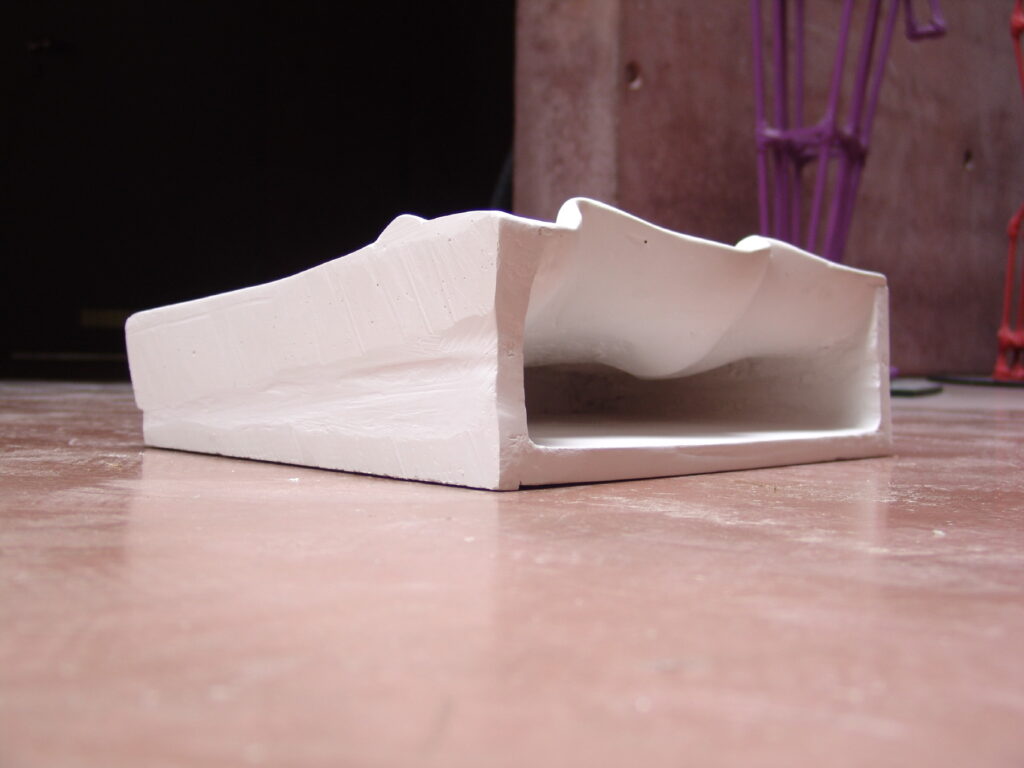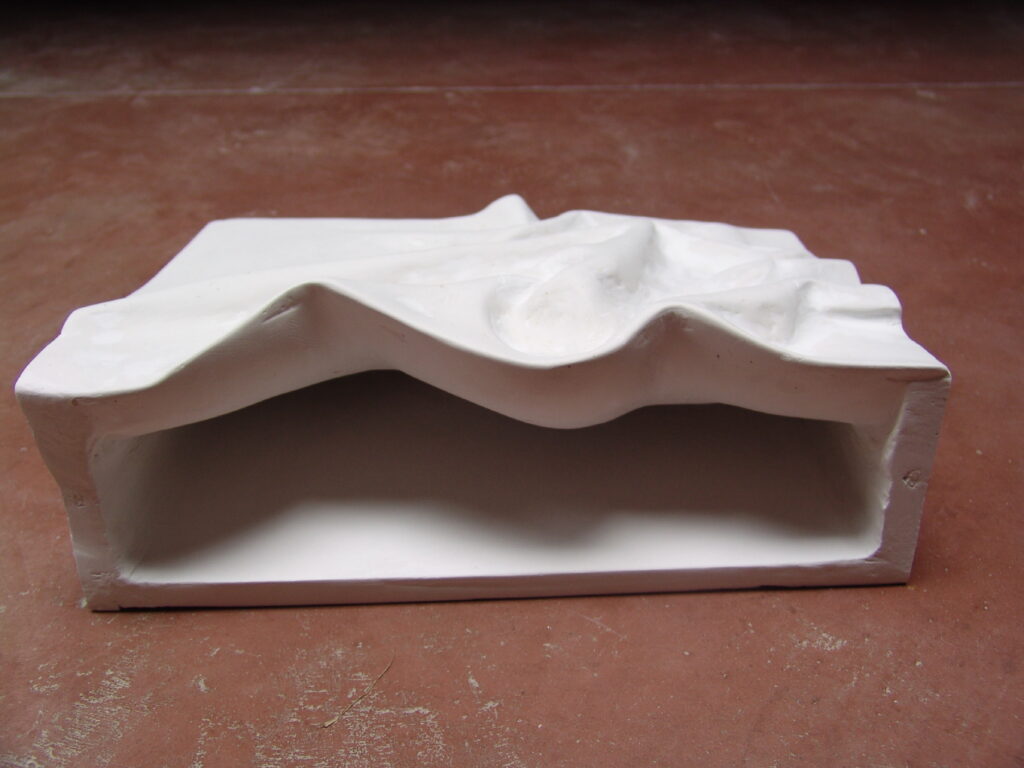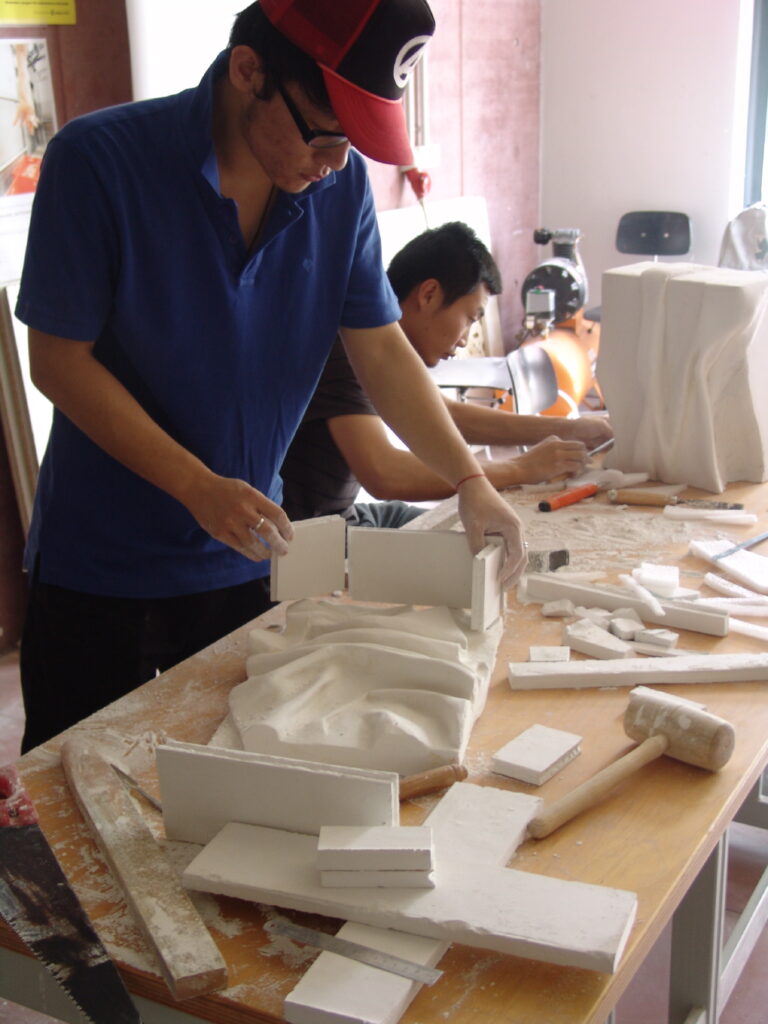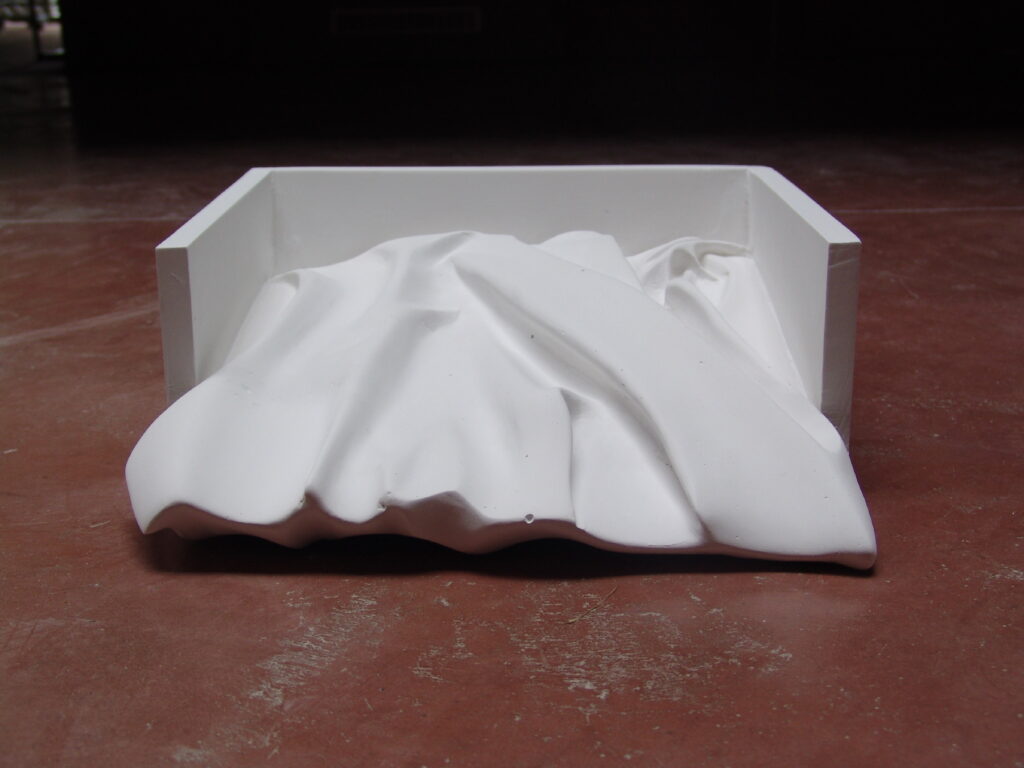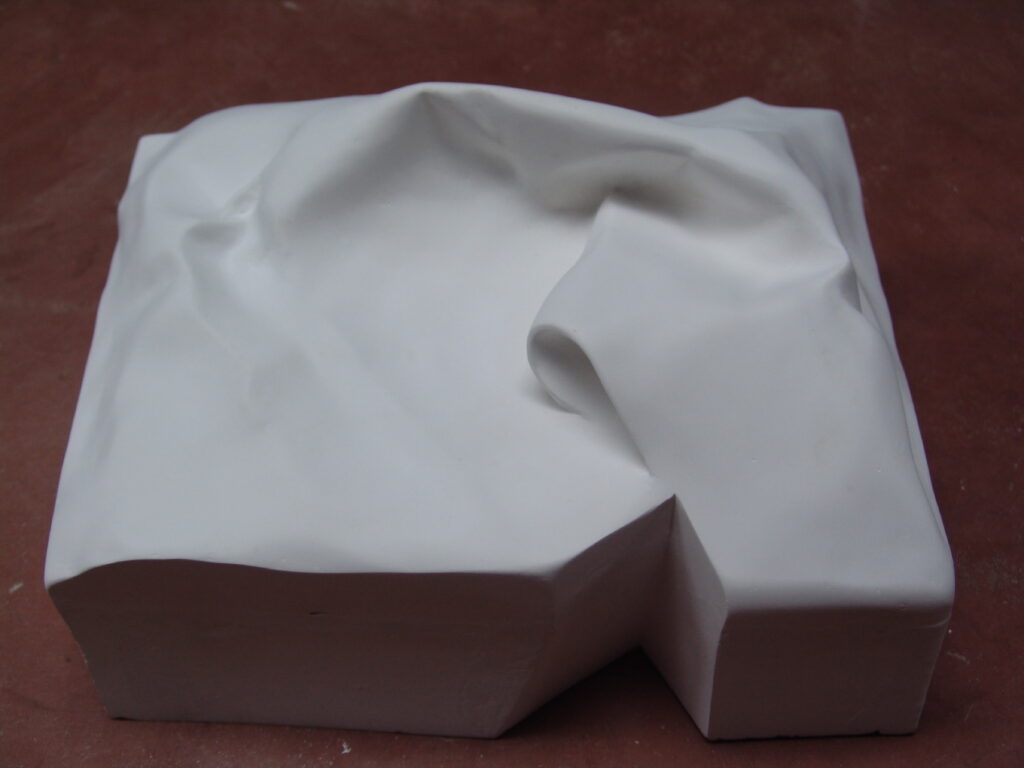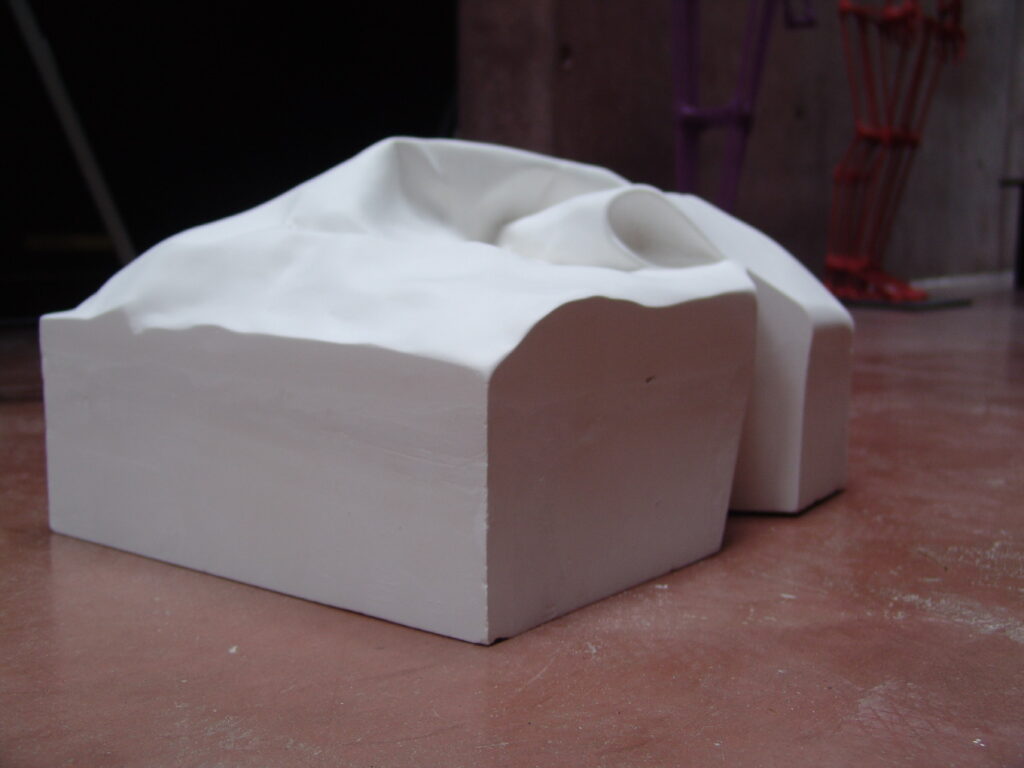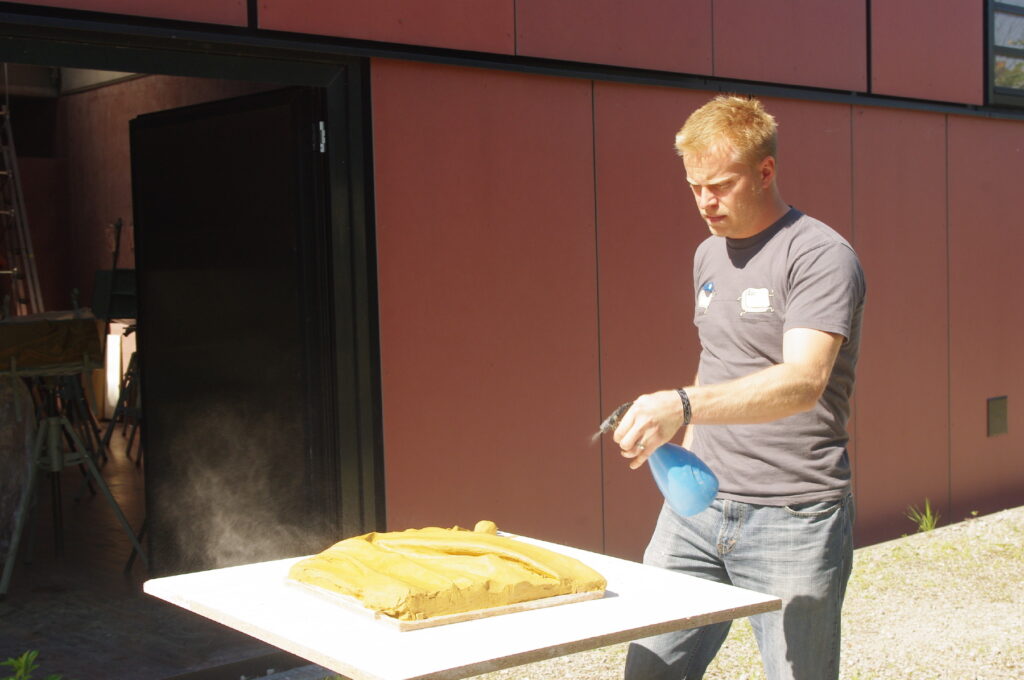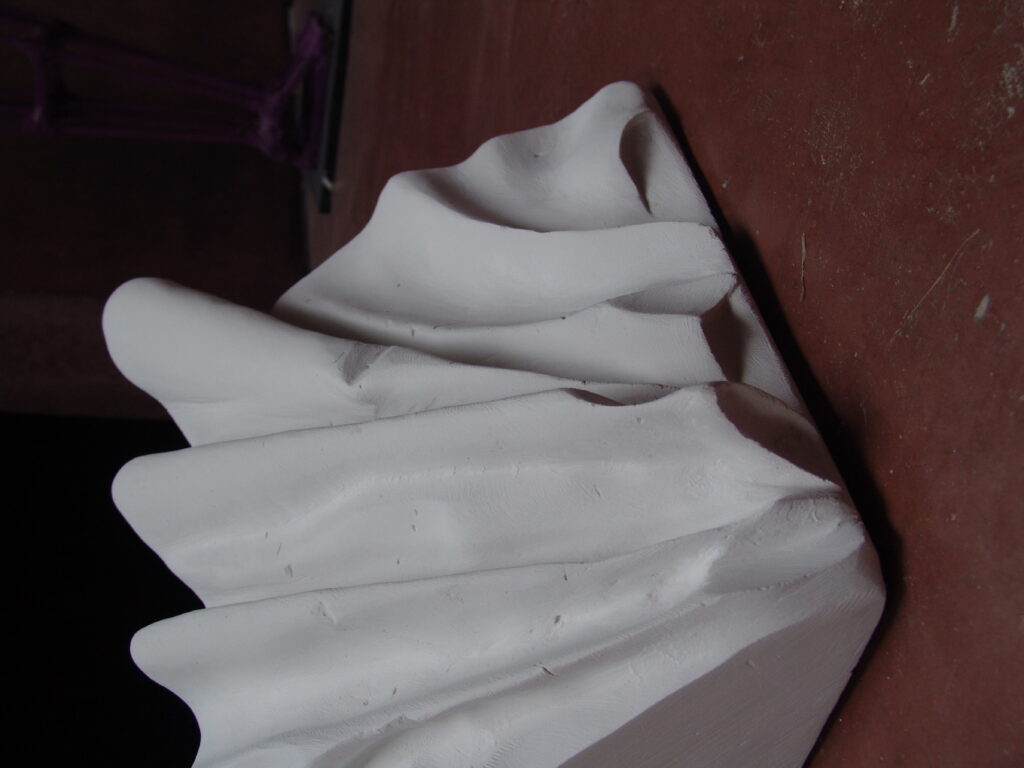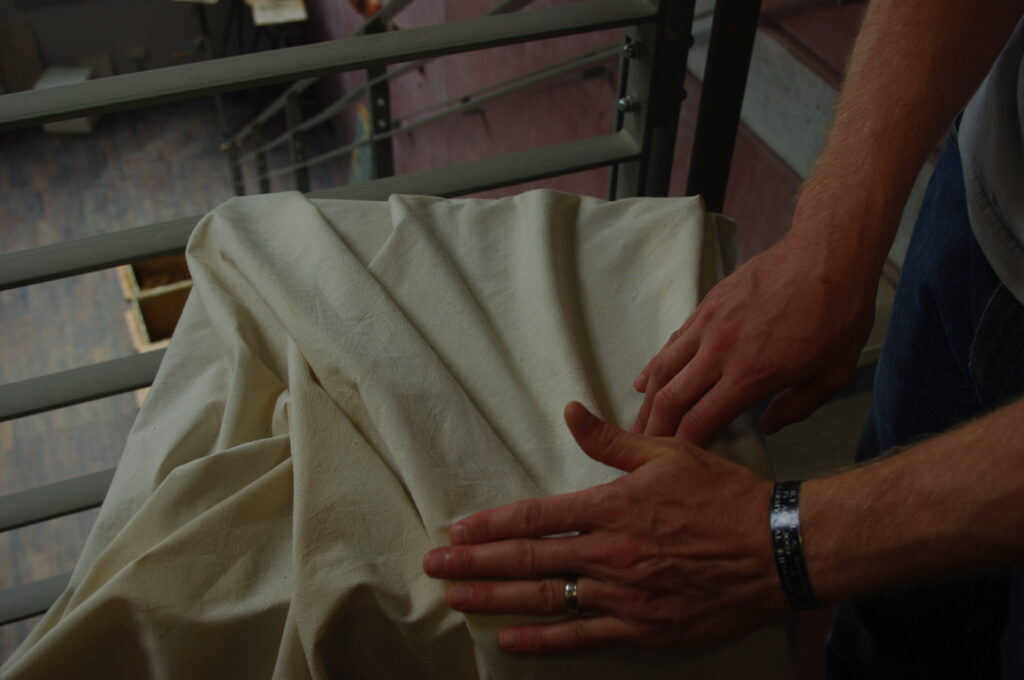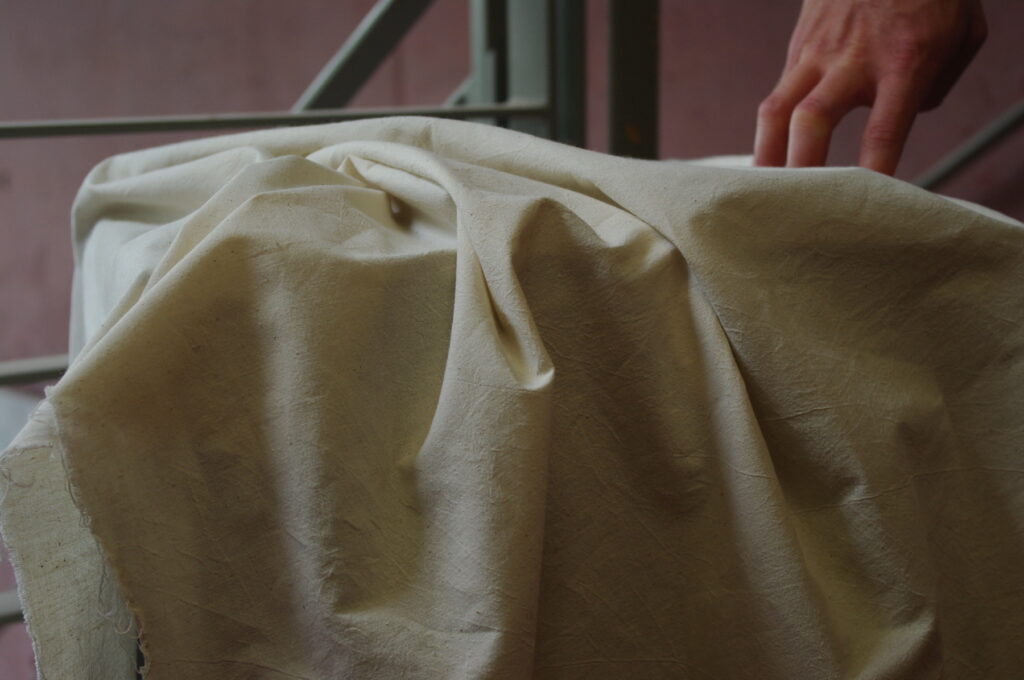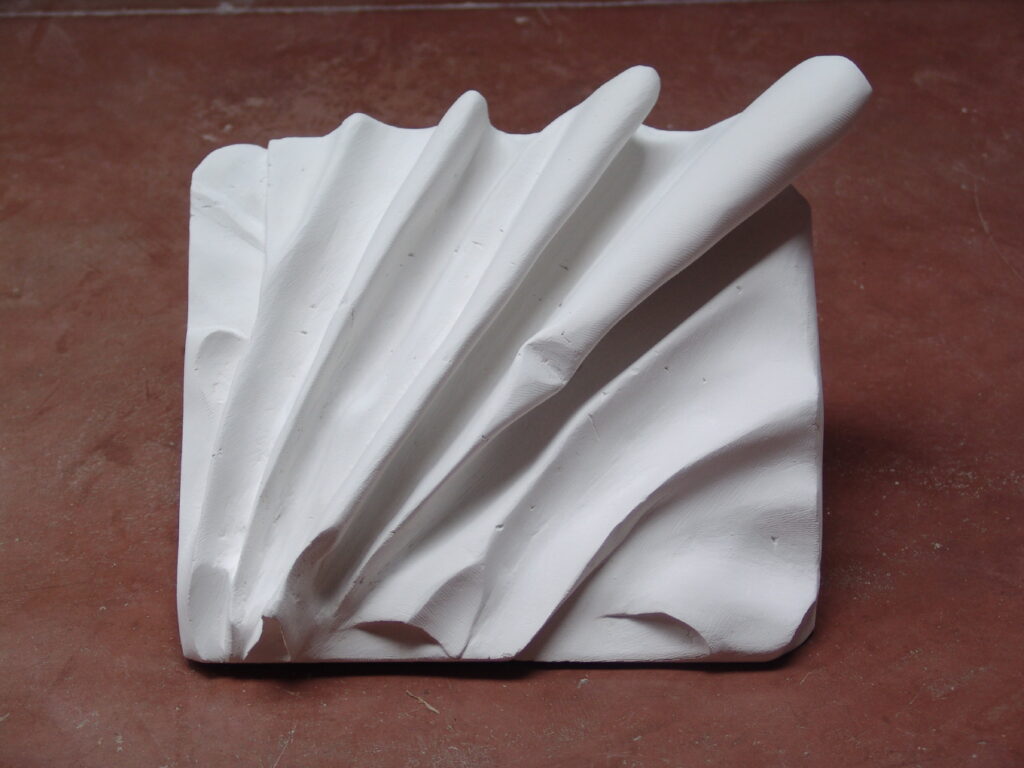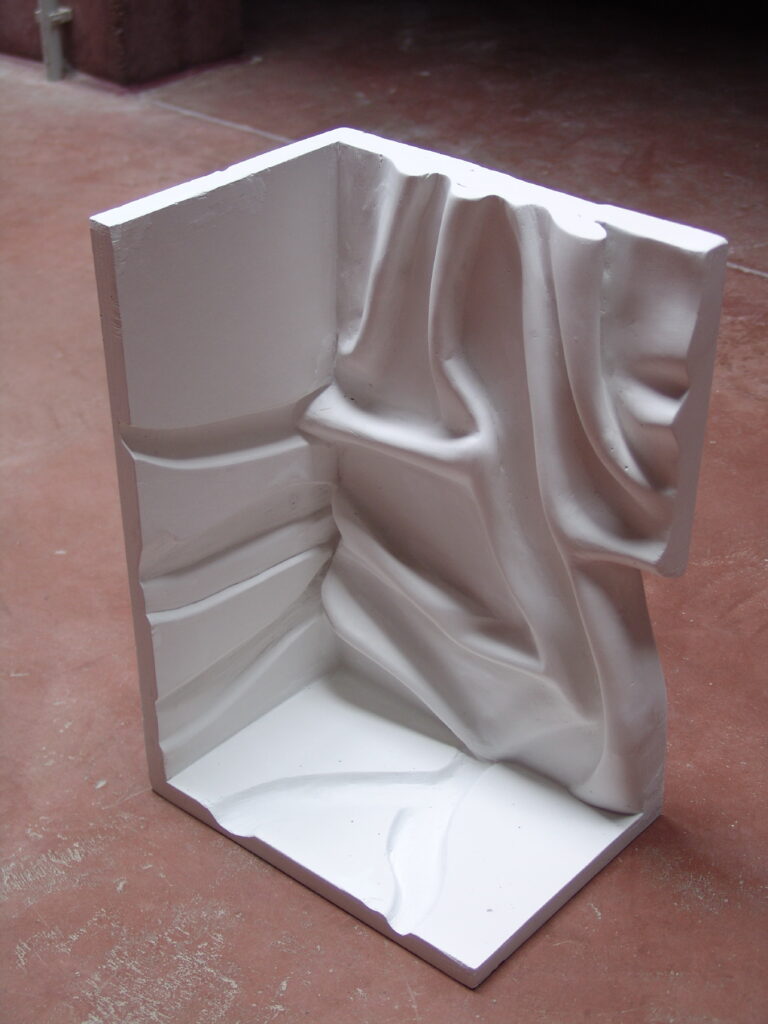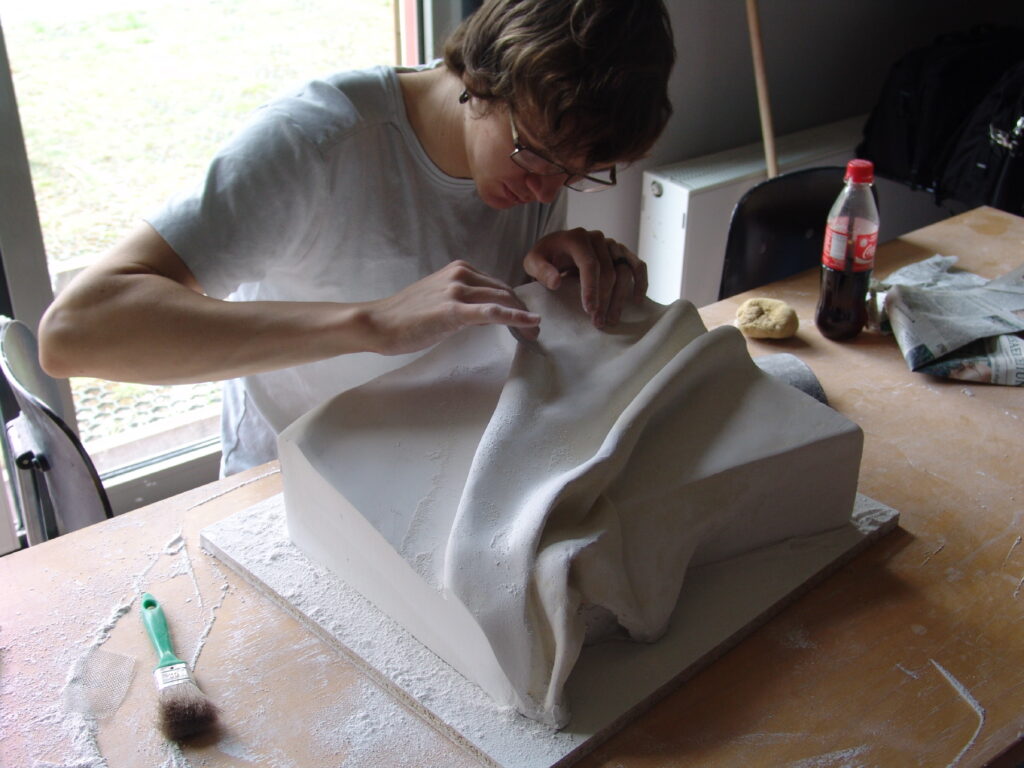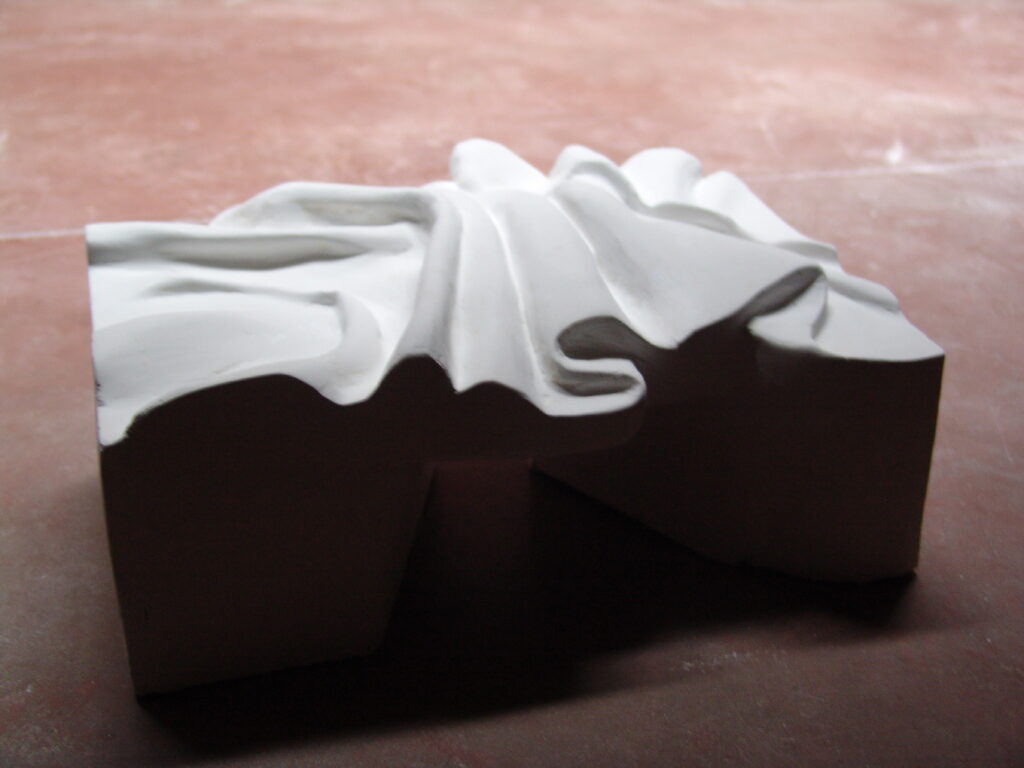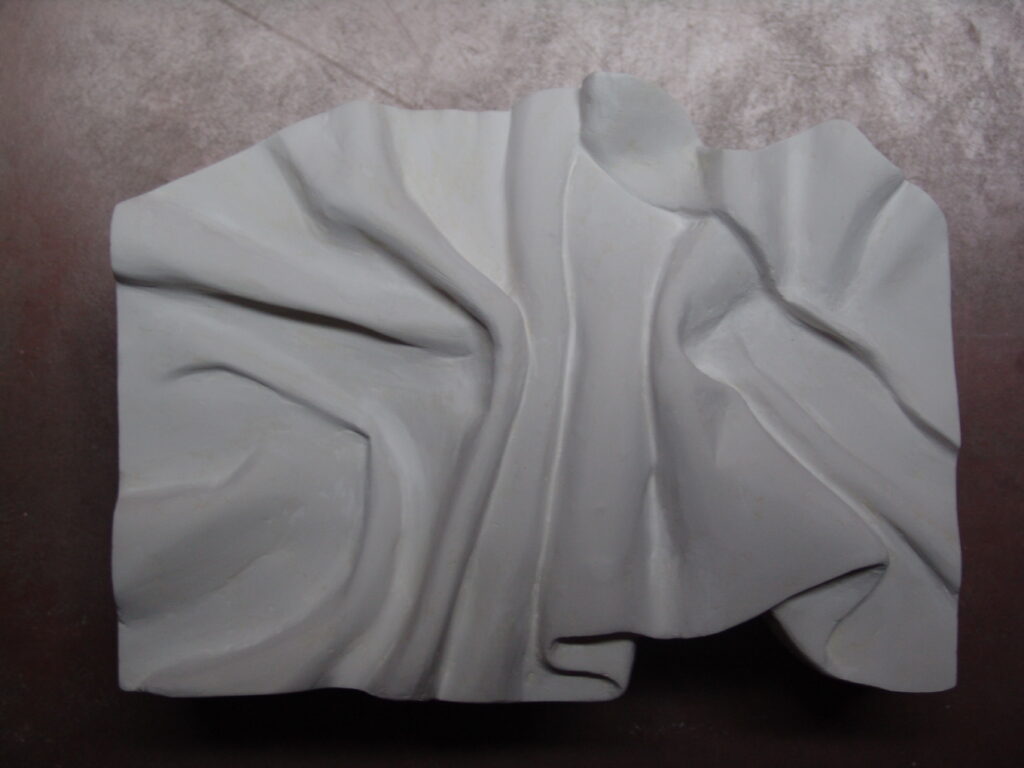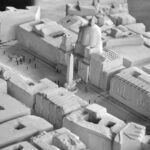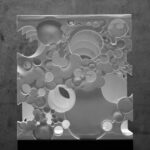Faltenwurf / drapery
Slope and torsion are phenomenons, which strongly influence our spatial cognition. Sloping surfaces are producing spatial illusions even in a limited space. In the 2- dimen- sional drawing this is systematized by the rules of perspective.
When modelling three-dimensional objects with slopes or twists this will increase our spatial perception.
A virtuous manifestation of this experience in the field of art is the relief.
For people with little experience in sculpture the preoccupation with this subject“ can be painstakingly difficult. The relief as an appearance in-between a three-dimensional object and a two-dimensional drawing is a medium only understandable by constant empirical exercises. Draperies from fabric, wrinkled landscape formations, rippled leaves and wrinkled paper are natural objects which follow the same laws as artistic reliefs.
We will analyse one of these motive closer by „life modelling“. This
will be a sensuous experience with great gain of knowledge. The drapery motive of your choice will be modelled in clay and then cast in plaster.
The plaster-cast draperies will then be collaged and integrated into
an architectural body (cube). This collage between sculpture and architecture automatically brings the form to a pointed statement like: roof-landscape, facade-landscape, portal, etc..
